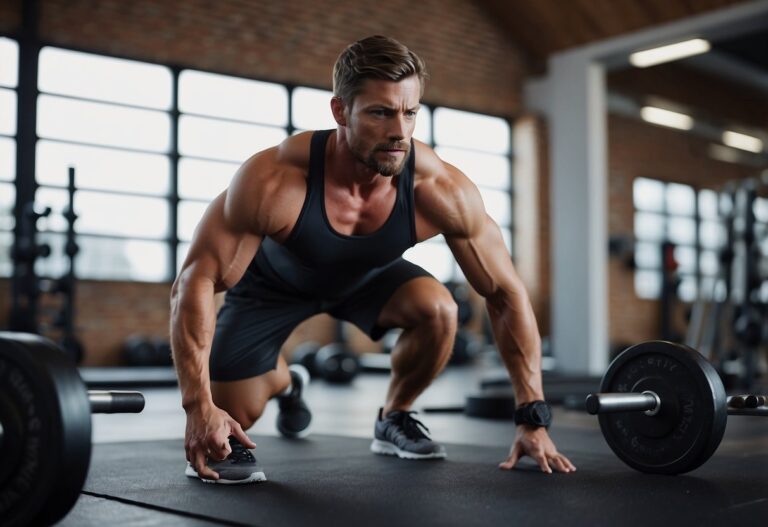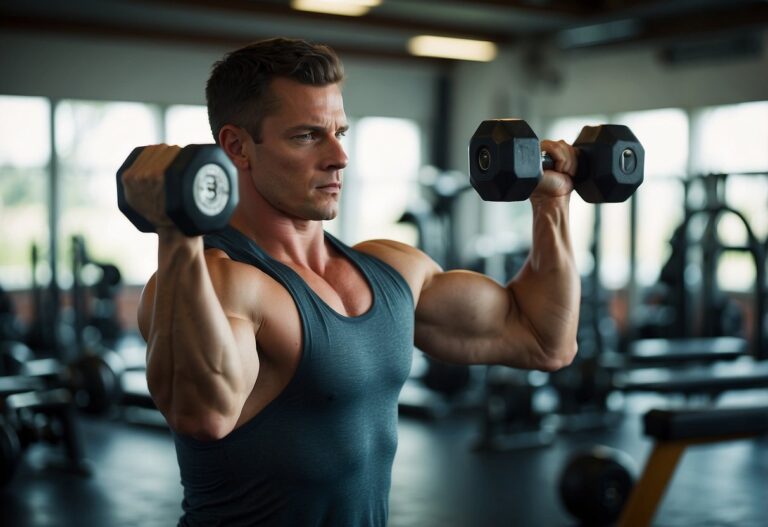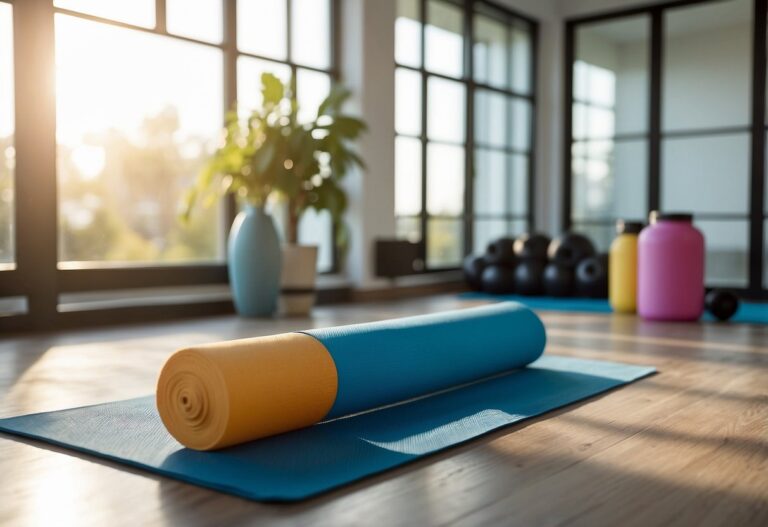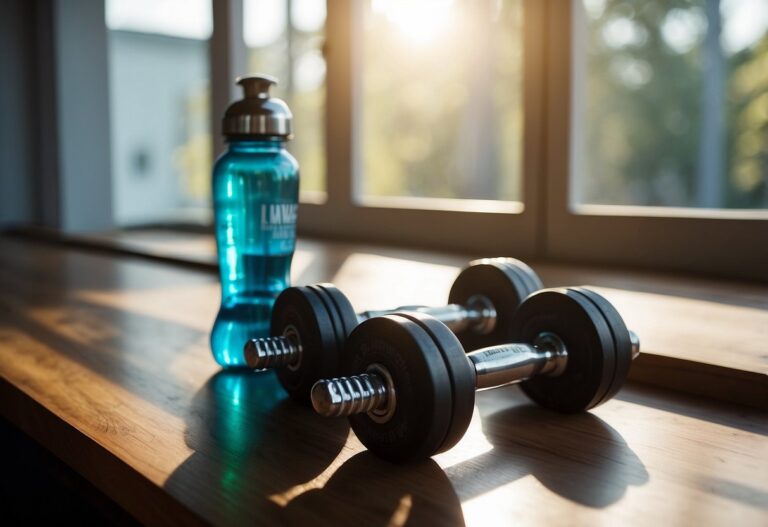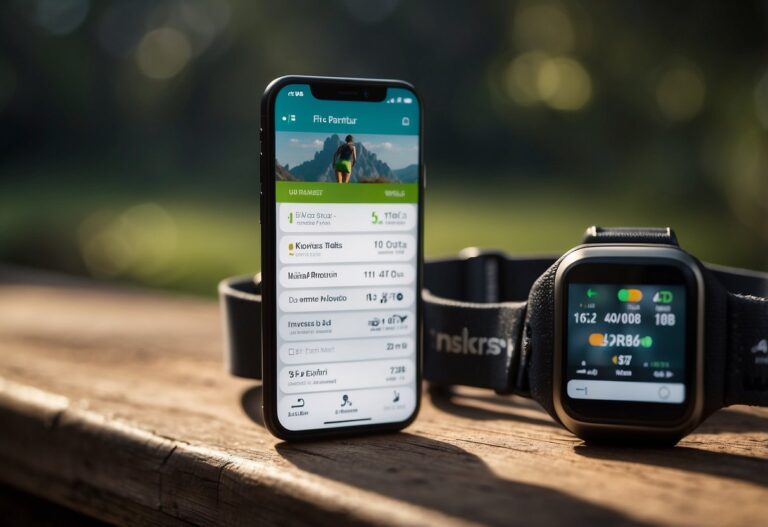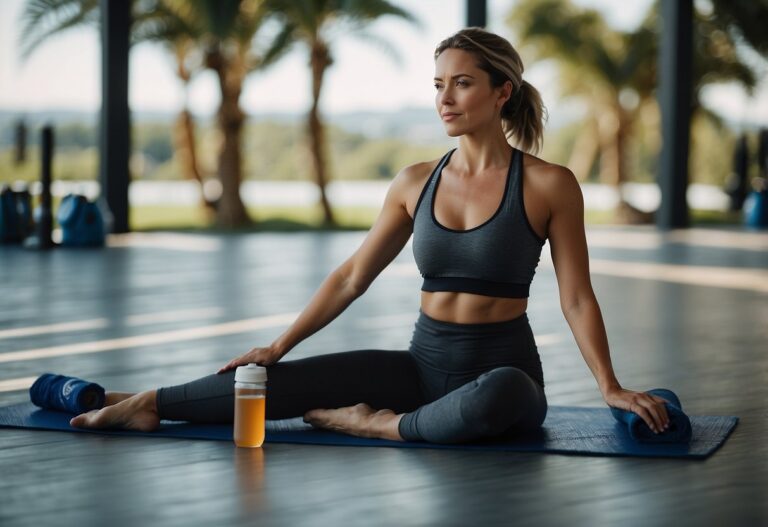Starting a fitness journey can be exciting yet overwhelming. As a gym beginner, you might have many questions about the right way to start. Knowing the basic dos and don’ts can make your gym experience more pleasant and effective. This guide will provide you with practical tips to help you feel more confident as you embark on your fitness adventure.
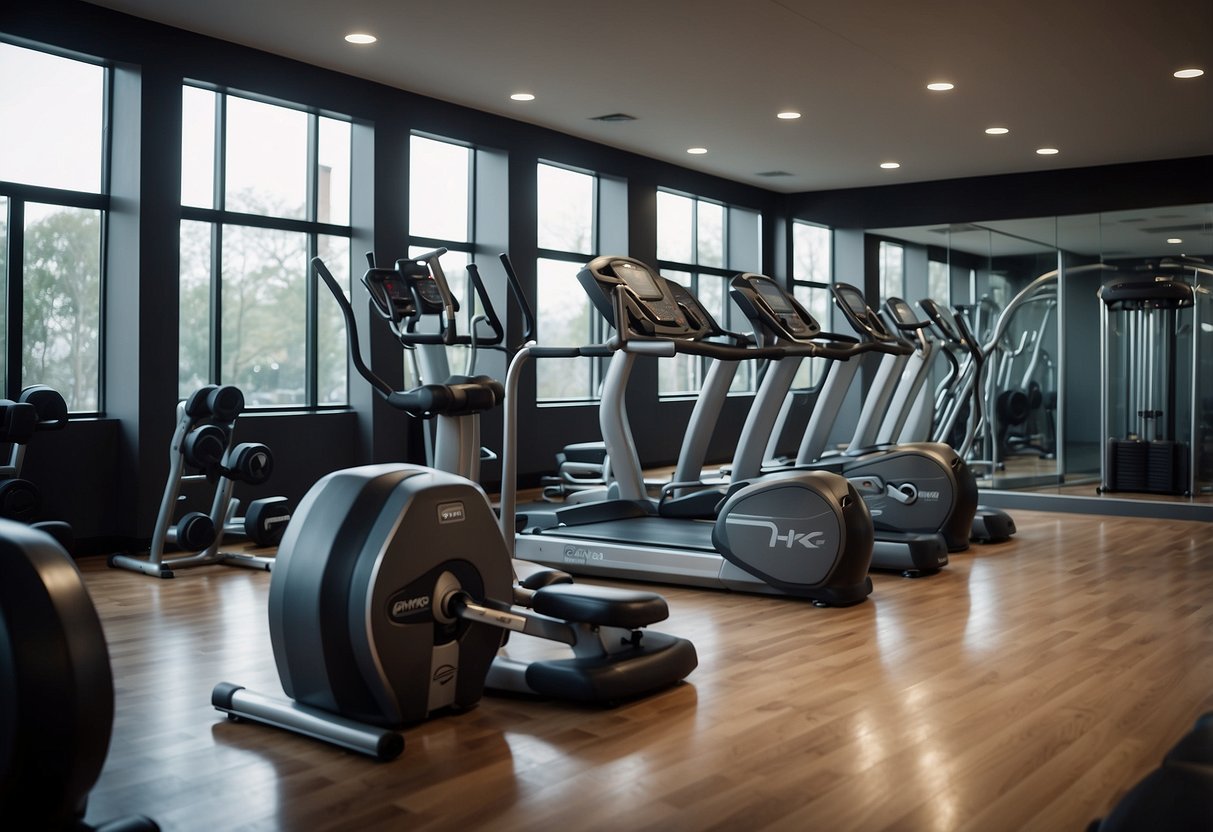
Whether you’re looking to lose weight, build muscle, or just improve your overall health, it’s important to follow some key guidelines when using the gym. These tips will help you avoid common mistakes and make the most of your workouts. Having a clear understanding of gym etiquette and best practices can set you on the path to achieving your fitness goals.
Warm up properly
Begin your warm-up by marching on the spot for around three minutes. You can add some variety by marching forwards and backwards while pumping your arms up and down.
Try bodyweight squats or inchworms for a few minutes. Both exercises help prepare your muscles. Your warm-up should last between 5 to 10 minutes.
Listen to your body. Make sure nothing hurts as you warm up. If it does, stop immediately and choose a different exercise.
Focus on Form
When you start at the gym, focusing on your form is crucial. Incorrect form can lead to injuries or make your workouts less effective.
Always lift lighter weights with good form rather than heavy weights with bad form. Proper technique ensures you target the right muscles and avoid strain.
If you’re new to an exercise, consider watching tutorials or asking a trainer. Guidance can help you perform movements correctly.
Pay attention to your body. If something feels wrong, it probably is. Stop and reassess your posture and movements.
Keeping your body aligned and movements controlled will help you maximise your workouts safely.
Start with Lighter Weights
When you first step into the gym, it might be tempting to lift the heaviest weights you can find.
Resist that urge. Start with lighter weights to ensure you are using the proper form.
Using lighter weights helps you learn the right technique and avoid injuries. For instance, a Dumbbell Romanian Deadlift can be safely practised with 5-10kg dumbbells.
You want to be comfortable with the movements before increasing the weight. This approach builds your confidence and helps you progress steadily.
You’ve got this!
Stay Hydrated
When it comes to working out, staying hydrated is key. Make sure you drink plenty of water before, during, and after your workouts. This helps you maintain energy levels and avoid dehydration.
Carry a reusable water bottle. It’s handy and ensures that you drink water regularly. Take small sips frequently rather than gulping down a lot at once. This keeps hydration consistent and prevents discomfort.
Consider your workout intensity. For higher intensity workouts, you may need more water. For example, during a long-duration cycle, you’ll need more than during a 30-minute weight set.
Keep these tips in mind, and you’ll feel better and perform better at the gym.
Wear Appropriate Clothing

When you first start going to the gym, what you wear matters. Your clothes should be comfortable and allow you to move freely.
Opt for workout clothes that fit well. Clothes that are too tight can cause issues like chafing, while baggy clothes can get in the way. Choosing well-fitting gear will help you feel confident and comfortable.
Avoid wearing jewellery. Items like rings, necklaces, and bracelets can be dangerous or get damaged during workouts. It’s best to leave them at home or in your locker.
Lastly, be considerate of others. Wearing clothes that are overly revealing might make others uncomfortable. Stick to attire that is appropriate for a shared space like the gym.
Listen to Your Body
Listening to your body is crucial when you start working out. It’s important to understand your limits and how your body feels during exercise. This helps you avoid injuries and stay motivated.
If you feel pain during a workout, stop immediately. Pain is your body’s way of signalling that something isn’t right. Ignoring it can lead to serious injury.
Always pay attention to how your muscles and joints feel. If something feels off, take a break or modify the exercise. This keeps you safe and ensures your workouts are effective.
Rest is just as important as exercise. Your body needs time to recover and build muscle. Make sure to get enough sleep and schedule rest days to help your body heal and get stronger.
Use a Spotter When Lifting Heavy
When lifting heavy weights, having a spotter is essential. A spotter is someone who assists you, ensuring your safety and improving your performance. They are there to help if something goes wrong.
Weightlifting exercises like bench press, squats, and deadlifts can be risky without a spotter. If you lift too much and can’t complete the rep, you might find yourself stuck under the bar.
A spotter can help you lift the weight back onto the rack, preventing injuries. Before starting, discuss the plan with your spotter to ensure clear communication and understanding of what you need.
Using a spotter also boosts your confidence. You’ll feel more secure knowing there’s someone to assist you, letting you focus on your form and technique during the lift. If you’re new to the gym, this added support encourages safer and more effective workouts.
Don’t Skip Rest Days
Skipping rest days can lead to burnout. Your muscles need time to repair and grow after workouts. When you exercise, you create tiny tears in your muscle tissues that only heal during rest.
Using rest days wisely is key. Consider light activities like walking or stretching. This keeps you active without overworking your body.
Ignoring rest can also increase the risk of injury. Overtraining can make you more prone to strains and sprains. Remember, rest is essential for long-term success at the gym.
Take it easy; listen to your body. Rest days aren’t just for rookies—they’re vital for everyone.
Clean Equipment After Use

When you finish using a piece of gym equipment, always take a few moments to clean it. Gyms can be hot spots for germs and bacteria. By wiping down machines, benches, and weights, you help keep the gym a safer and more hygienic place for everyone.
Imagine going to use a bench, and it’s drenched in someone else’s sweat. Not a pleasant thought, right? Carrying a small towel or using the wipes provided can prevent this. It’s a simple act of courtesy that makes a big difference.
Cleaning equipment shows respect for others. No one wants to start their workout with someone else’s mess. So always wipe down surfaces after you’ve used them. It helps maintain a pleasant environment for everyone.
Follow a Balanced Diet

To get the most out of your gym routine, you need a balanced diet. Eating the right foods can help you feel energised and support your fitness goals.
Start by eating a mix of protein, carbs, and fats. Protein helps build muscles. Carbs give you energy. Healthy fats keep your body running smoothly.
Think about meal timing too. Have carbohydrates before your workout. They give you energy and help you perform better. For example, you could have cereals or bananas. Focus on complex carbs a few hours before exercising.
Stay hydrated. Drink water throughout the day. Make it a habit to drink water before, during, and after your workouts. Aim for around 17 ounces two hours before exercising.
Don’t forget your post-workout meal. This helps your body recover. Aim for a combination of protein and carbs, like a chicken sandwich or a smoothie with protein powder and fruit.
Consistency is key. Try developing a routine that suits your lifestyle. And remember, a balanced diet isn’t just about what you eat, but when and how often you eat.
Preparing for Your First Gym Session
Starting your gym journey can feel overwhelming, but being well-prepared can make it easier and more enjoyable. Focus on choosing the right gym, wearing appropriate clothing, and bringing essential items.
Research and Choose the Right Gym
Finding the right gym is crucial. Look for a location close to your home or workplace to make visits convenient. Check out different gyms’ facilities. Do they have the equipment and classes you need?
It’s also important to visit the gym before signing up. Many gyms offer free trials or tours. Use this opportunity to assess the atmosphere. Is it friendly and welcoming? Are the staff and trainers approachable?
Also, compare membership costs. Some gyms may have hidden fees or require long-term contracts. Read the terms and ask about any additional charges. Ensuring you’re comfortable with the gym’s vibe and terms will help you stay committed.
What to Wear and Bring
Wearing the right gym clothes can make your workout more comfortable. Opt for breathable, moisture-wicking fabrics. These materials keep you cool and dry by drawing sweat away from your skin. Avoid cotton as it absorbs sweat, making clothes heavy and uncomfortable.
Choose supportive footwear. Good trainers prevent injuries and provide the support needed for various exercises. If unsure, ask a staff member for recommendations.
Pack your gym bag with essentials. A water bottle is crucial to stay hydrated. A small towel is useful for wiping down equipment after use. Many people also bring headphones for listening to music, which can make workouts more enjoyable.
For post-workout hygiene, bring a change of clothes, shower essentials, and a plastic bag for soiled clothing. If the gym has a locker room, consider bringing a lock to keep your belongings secure.
Preparation helps you feel more confident and ready to face your first gym session.
Proper Technique and Form
Understanding and applying proper technique and form is crucial to prevent injuries and maximise your workout efficiency. It involves warming up and cooling down and mastering basic workout moves.
Warm-Up and Cool-Down
A proper warm-up can set the tone for your entire workout. Always start with a few minutes of light aerobic activity, like jogging or brisk walking, to get your heart rate up. Follow this with dynamic stretches, such as leg swings or arm circles, to prepare your muscles and joints for exercise. Warming up helps improve circulation, increases core body temperature, and prepares your muscles for more intense activity.
After your workout, a good cool-down is just as important. This should include light cardio to gradually lower your heart rate. Static stretching is useful at this stage to help lengthen muscles and improve flexibility. Hold each stretch for 20-30 seconds, focusing on major muscle groups used during your workout. This helps in reducing muscle stiffness and soreness the next day.
Basic Workout Moves
Proper form in basic workout moves ensures efficacy and safety. For instance, in a squat, keep your feet shoulder-width apart. Lower your hips down as if sitting in a chair, keeping your back straight and your knees behind your toes. Engage your core and drive through your heels to stand back up.
When doing a push-up, place your hands slightly wider than shoulder-width apart. Keep your body in a straight line from head to toe. Lower yourself by bending your elbows, ensuring your chest almost touches the floor, then push back up.
Another key move is the plank. Place your forearms on the ground with elbows directly under shoulders. Keep your body straight, engage your core, and hold as long as you can. Proper plank form strengthens your abs, back, and shoulders.
For more detailed guides on these techniques, visit Mayoclinic’s weight training page and Love At First Fit’s gym tips.
Maintaining Motivation

Keeping up your motivation at the gym can be challenging. It’s important to set practical goals and track your progress to maintain your enthusiasm and stay committed.
Setting Realistic Goals
To stay motivated, start with realistic goals. Begin by deciding what you want to achieve, such as gaining strength, losing weight, or improving stamina. Break these down into smaller, achievable steps. For instance, if your goal is to run 5 km, start with running short distances and gradually increase.
Avoid setting targets that are too ambitious as they can lead to disappointment. Celebrate small victories along the way. Achieving these milestones boosts your confidence and keeps you motivated. Remember, progress might be slow but consistent efforts lead to long-term benefits.
A good example is aiming to visit the gym three times a week instead of every day. This approach is easier to stick to and less overwhelming.
Tracking Your Progress
Keeping track of your performance is another key to maintaining motivation. Use a workout journal or an app to document your exercises, weights, and reps. This allows you to see how far you’ve come and adjusts your routine based on your improvements.
Take progress photos or measurements regularly. Sometimes changes in your body may not be obvious by looking in the mirror every day. Recording these changes can be incredibly motivating as you start to see the results of your hard work.
Using tools like Peloton’s built-in timer can help you monitor and improve your workout duration over time. Also, don’t hesitate to review past records to keep up the momentum and set new targets as you advance.


